Untitled (1853), 2024. Inkjet UV, Liquid Lamination glanz, auf Dibond, 100 x 100 cm
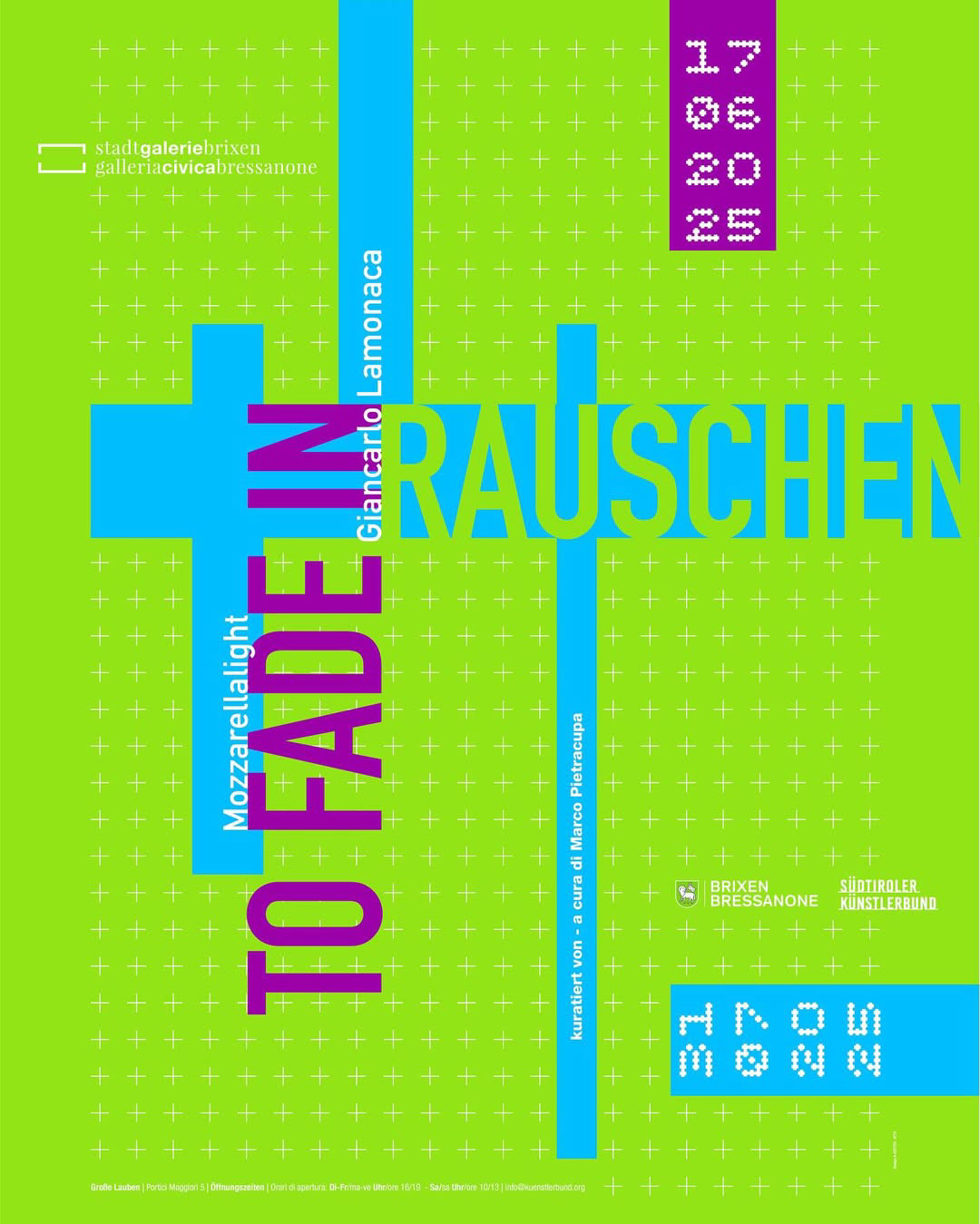
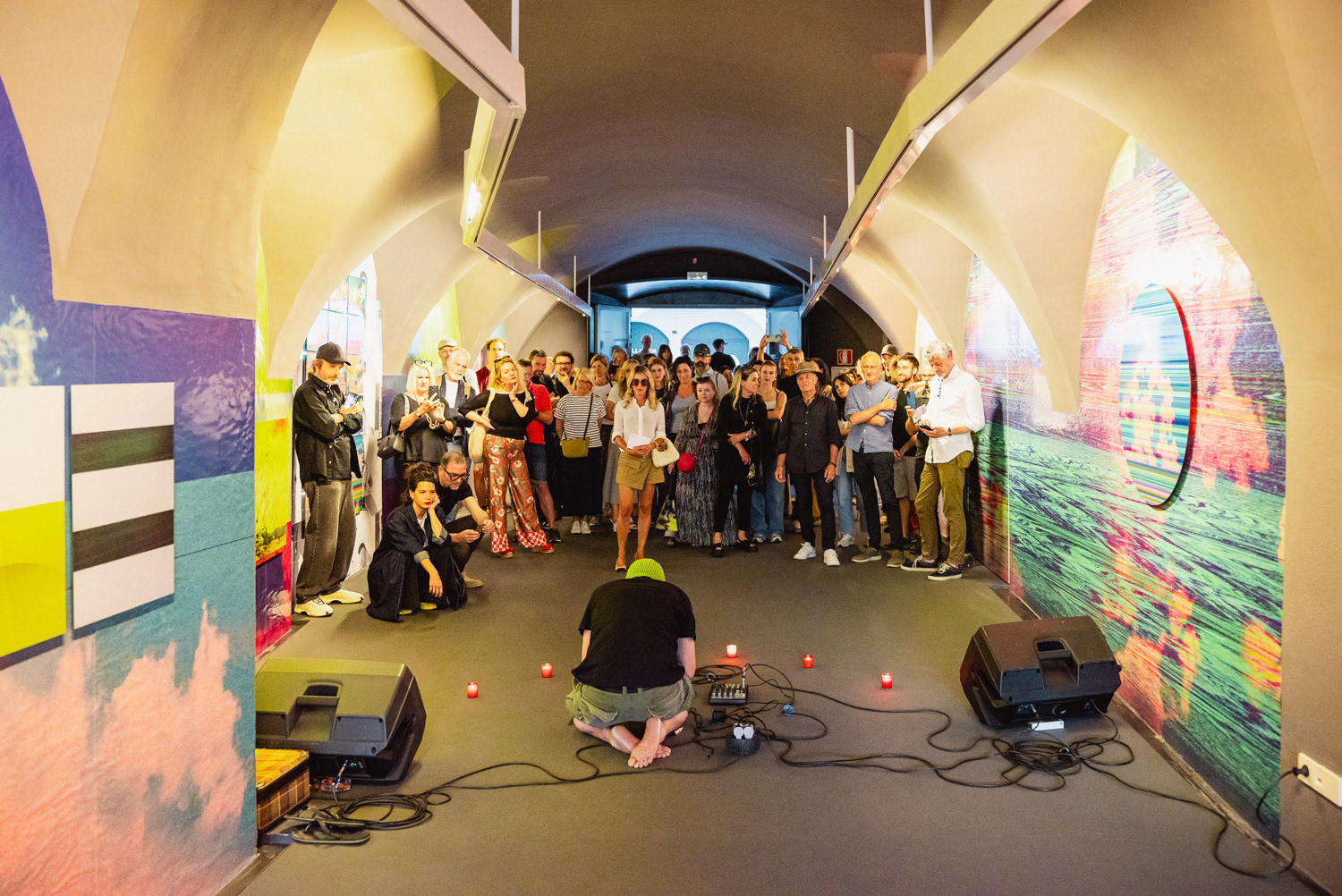
RAUSCHEN, Sound-Performance by Kompripiotr
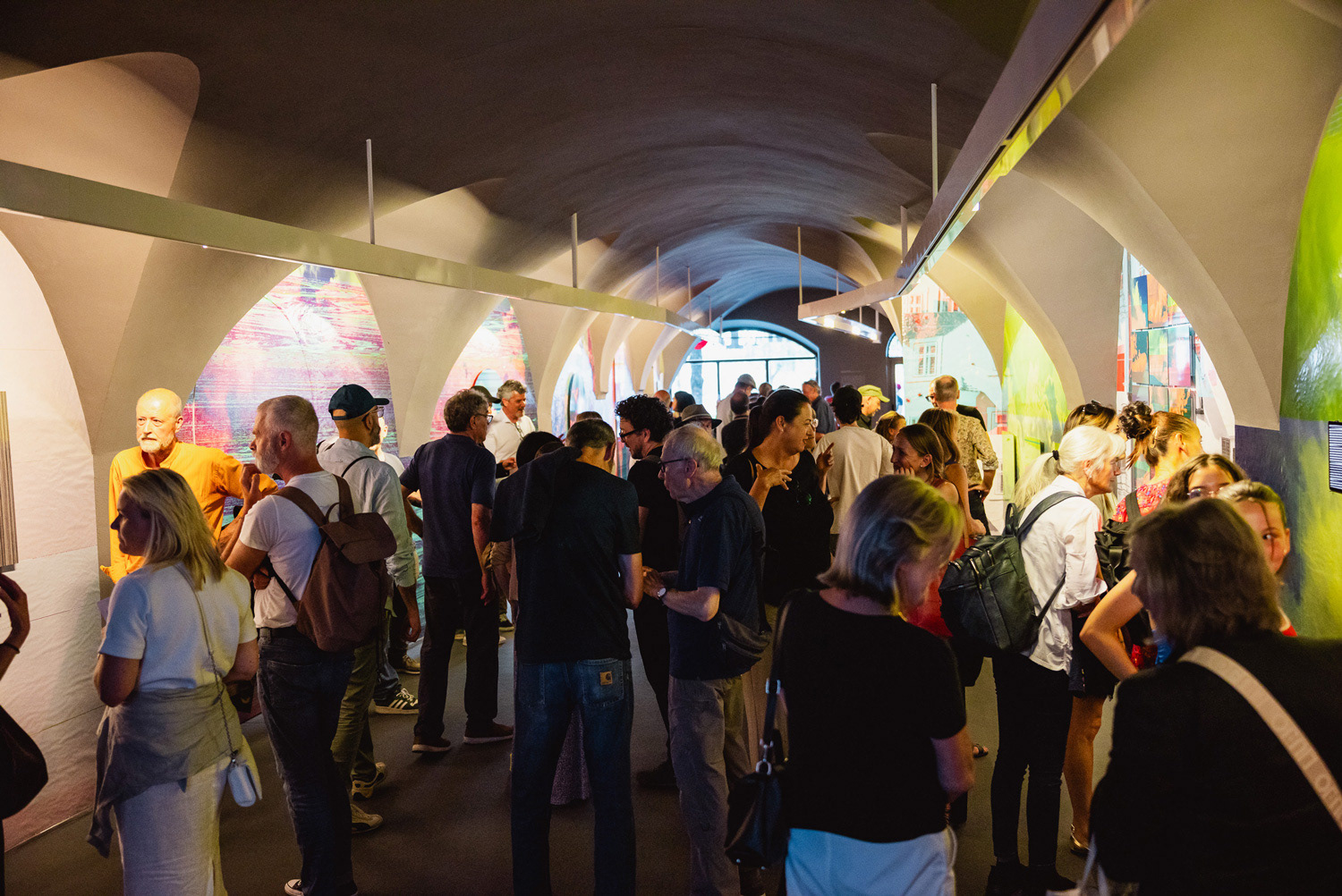
RAUSCHEN, Vernissage
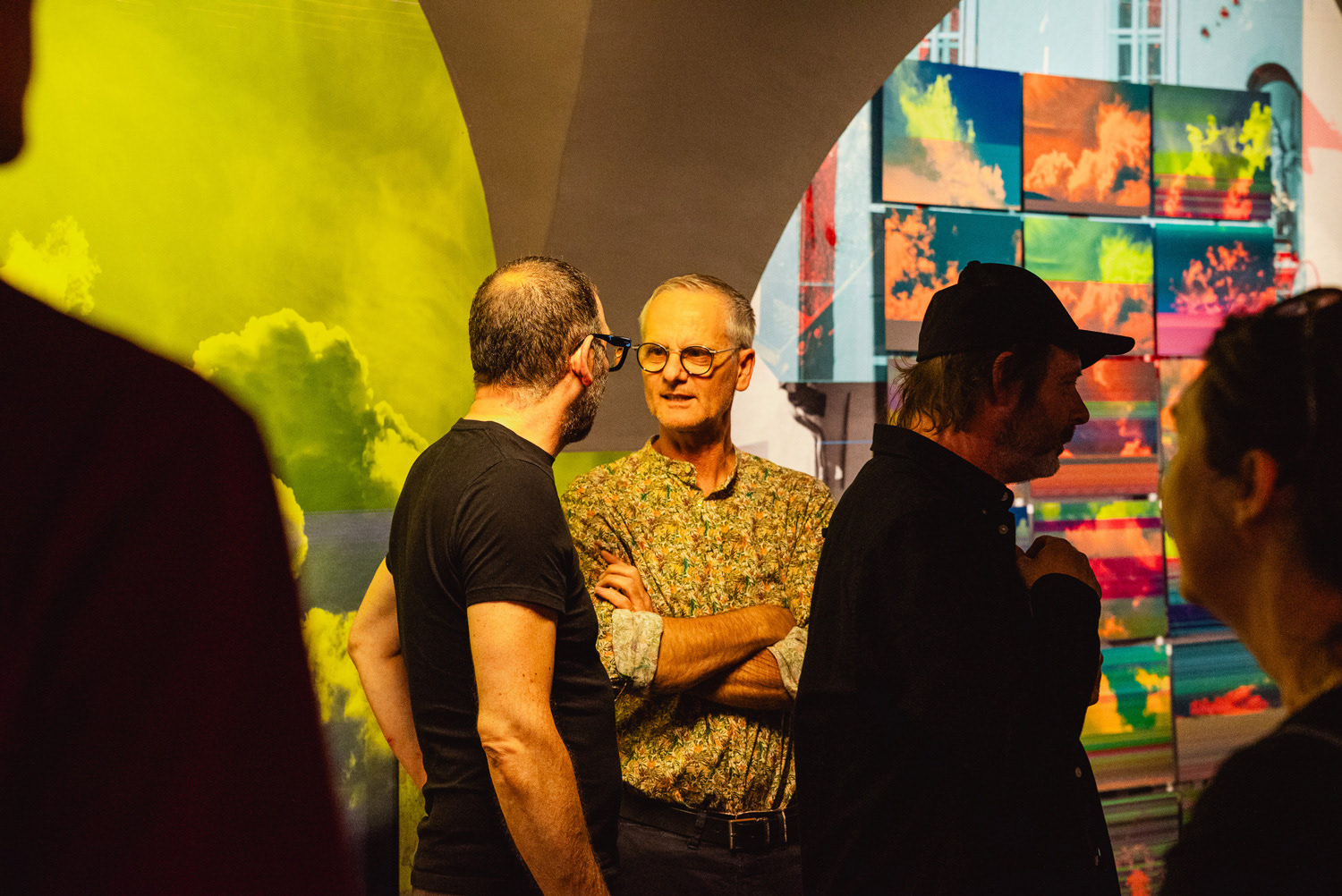
RAUSCHEN, Vernissage
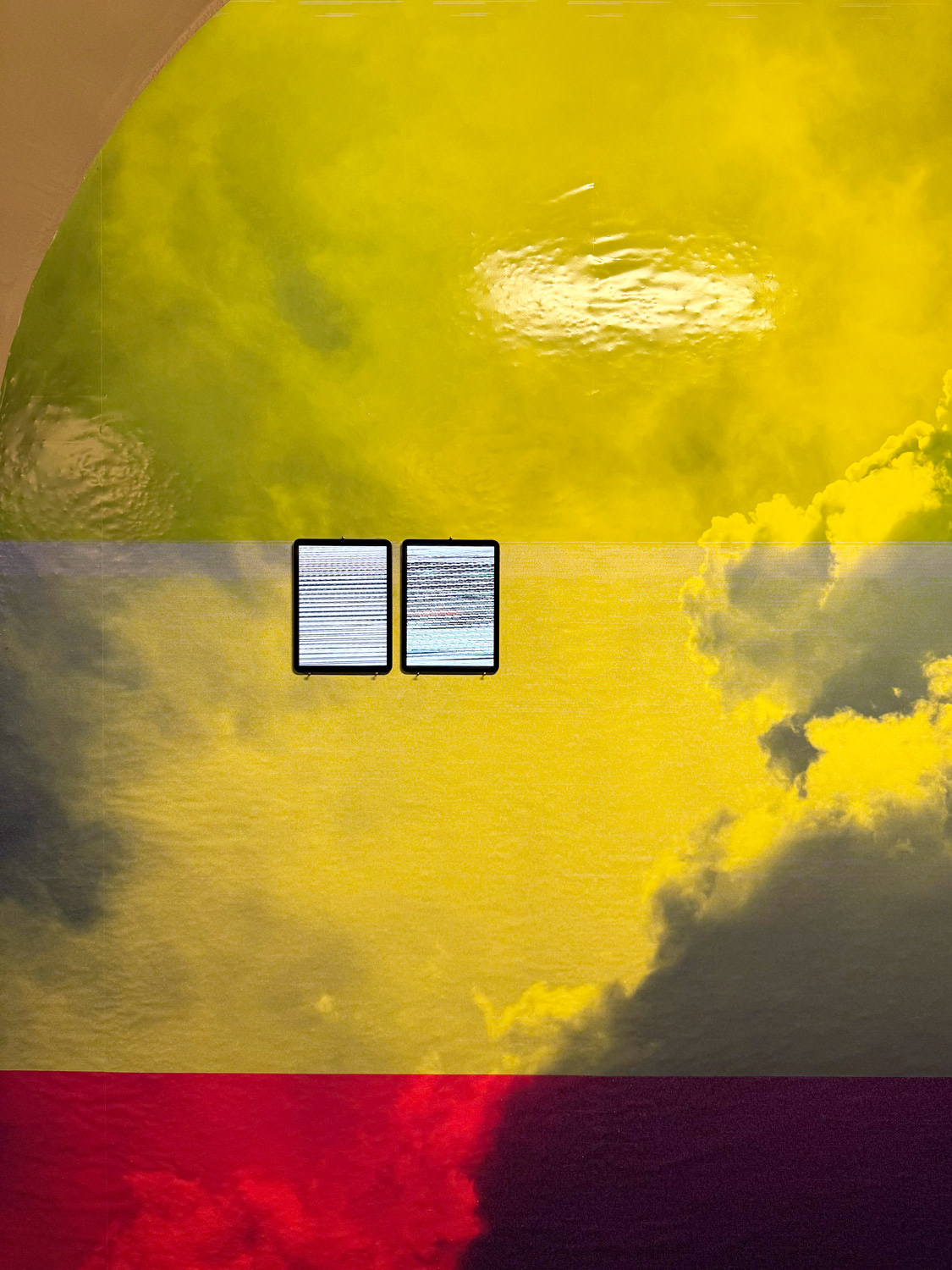
RAUSCHEN, Ausstellungsansicht
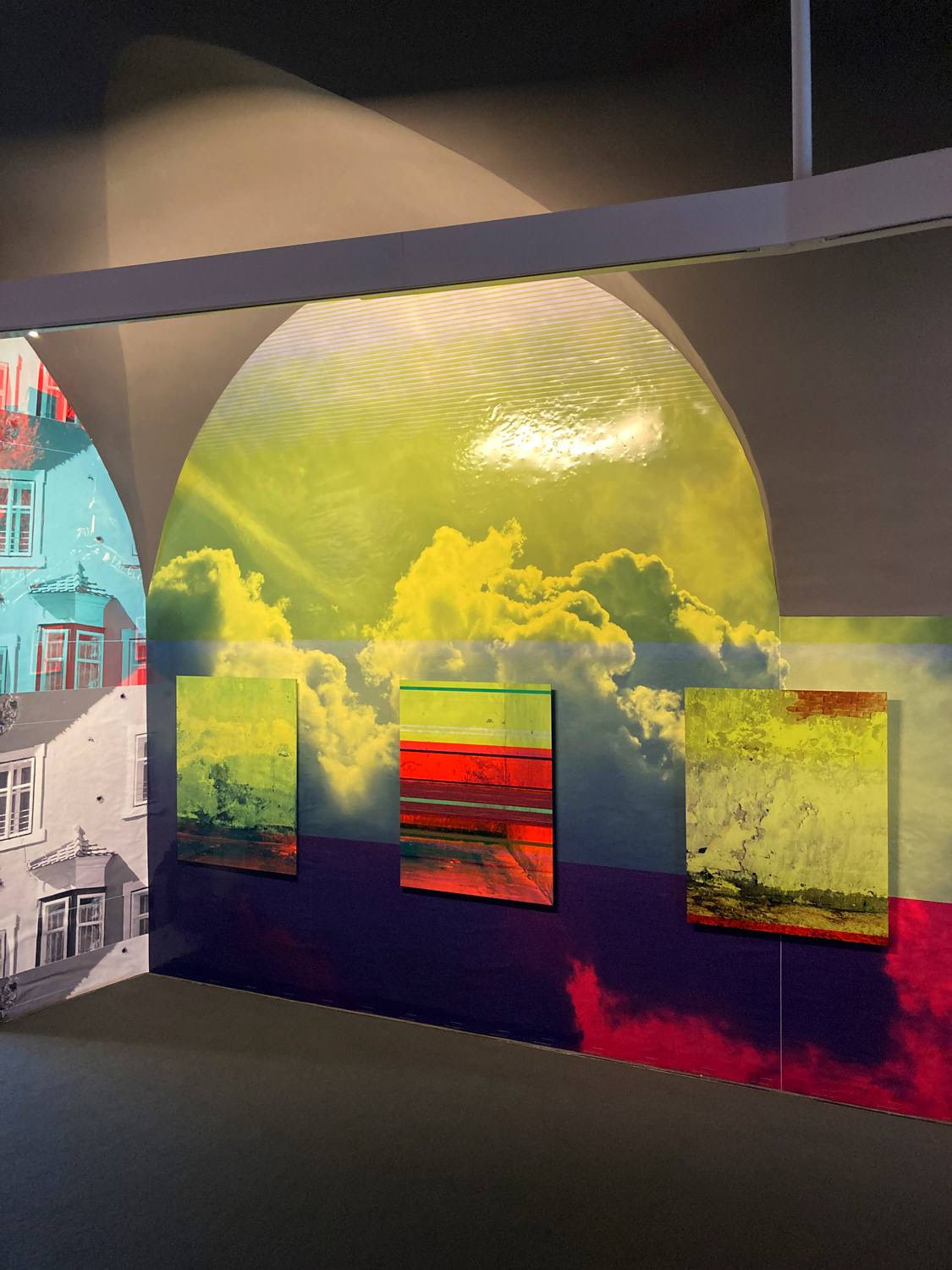
RAUSCHEN, Ausstellungsansicht
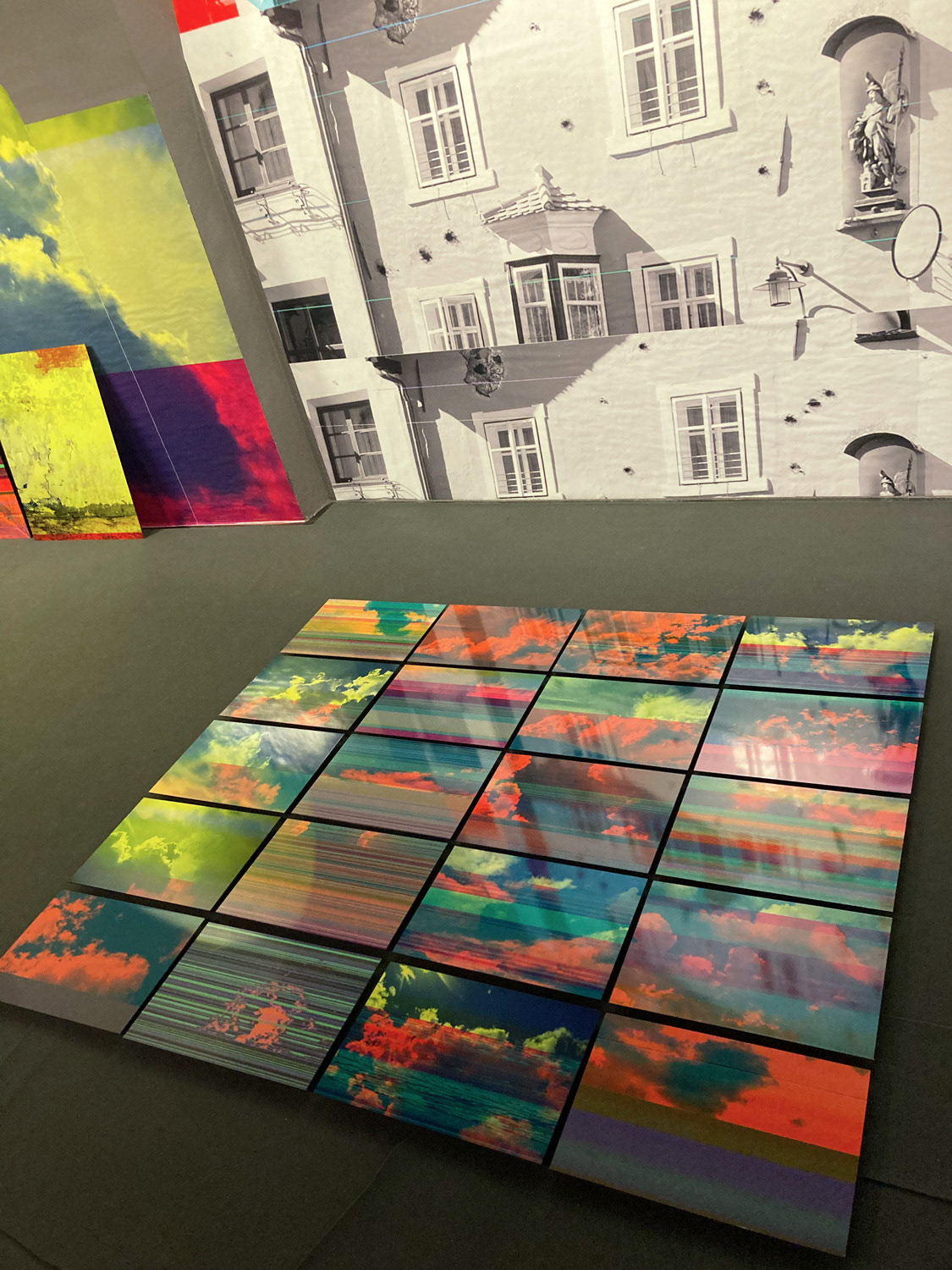
RAUSCHEN, Ausstellungsansicht
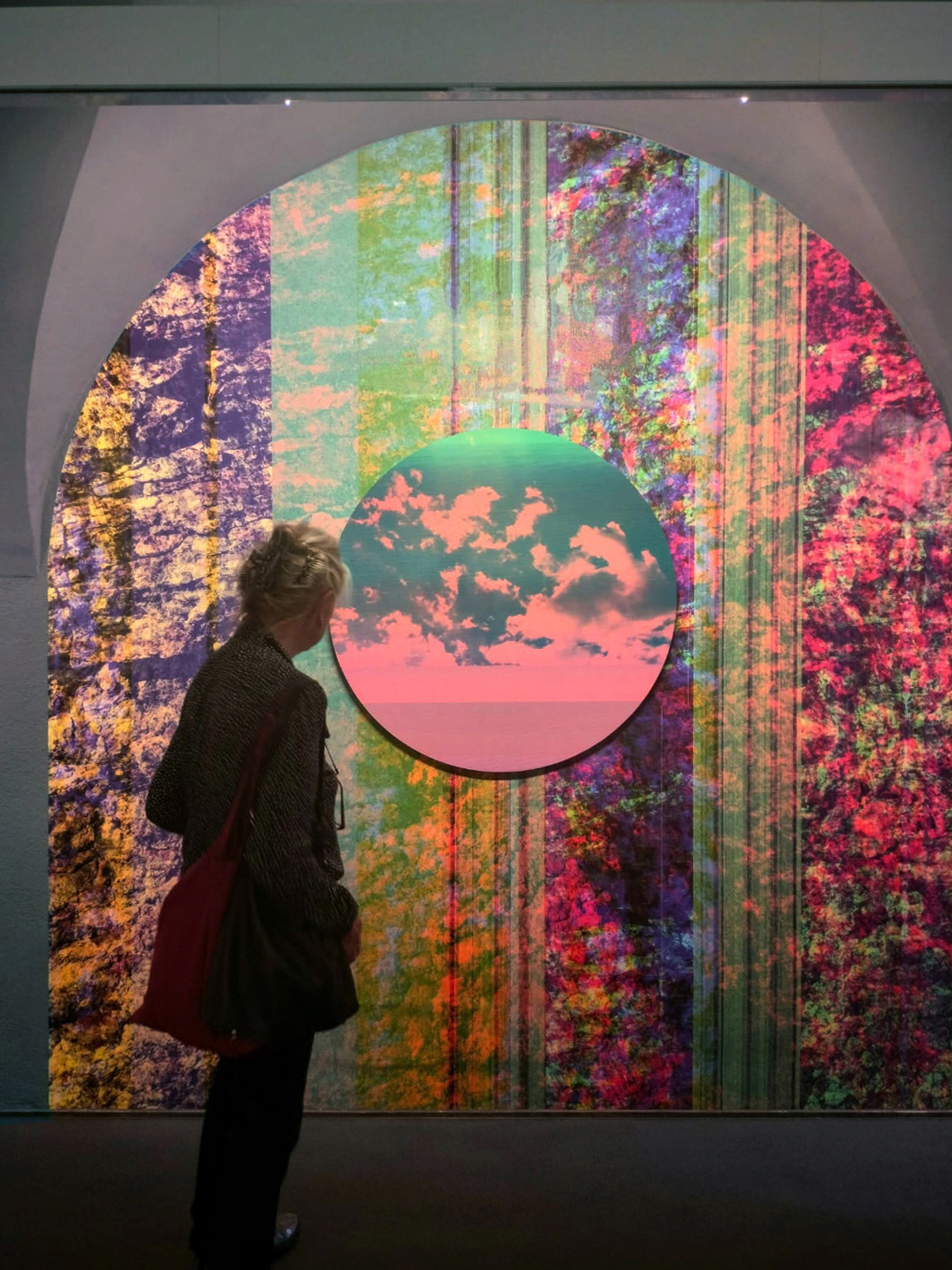
RAUSCHEN, Ausstellungsansicht
RAUSCHEN
17.06. - 31.07.2025, Stadt Galerie Brixen
17.06. - 31.07.2025, Stadt Galerie Brixen
In einer Welt, in der digitale Bilder zur dominanten Form von Erinnerung geworden sind, fragt die Ausstellung Rauschen nach dem, was sich entzieht. Was bleibt von einem Bild, wenn sein Inhalt zerfällt, wenn seine Daten unlesbar werden?
Technisch gesprochen bezeichnet Rauschen einen Zwischenzustand, ein störendes Signal, ein fehlerhaftes Element, das den „reinen“ Informationsfluss trübt. In den Arbeiten dieser Ausstellung tritt das Rauschen als ästhetischer Moment auf - als sichtbare Spur des Verlusts, aber auch als Verteidigung gegen visuelle Kontrolle. In den beschädigten Dateien, den gestörten Übertragungen, den fragmentierten Bildspeichern, generieren technische Artefakte poetische Möglichkeitsräume.
Die Werke zeugen von einer subtilen Form der Erosion: von Algorithmen, Speicherfehlern, Datenmigrationen. Diese Erosion ist unsichtbar - bis sie sichtbar wird - in Pixelverschiebungen, Farbstürzen, Unschärfen. Sie stellt die Idee eines unsterblichen digitalen Archivs radikal infrage. Diese sogenannte digitale Erosion ist kein Defekt. Sie ist eine Konsequenz. Ein Symptom. Eine Sprache.
Es sind Bilder im Übergangszustand - zwischen Sichtbarkeit und Verlust. In ihnen lagert sich eine Ästhetik der Veränderung ab, eine Logik des Fragments, eine Aufmerksamkeit für das, was dazwischen liegt. Sie legen offen, dass überall das Instabile wirkt. Sie führen vor, dass jede Wahrnehmung konstruiert ist - und dass das, was wir „sehen“, immer auch ein Prozess des Übersehens ist.
Die fehlerhaften Bilder verweisen auf Lücken im System und feiern das Bruchstück als Ort des Widerstands. In einer Zeit, die nach Kontrolle und Berechenbarkeit strebt, wird das Rauschen (auch) zur politischen Geste.
Denn (digitale) Bilder sind nie neutral. Sie durchlaufen in zahlreichen Prozessen algorithmische, ästhetische, kulturelle und gar politische Filter. Und viele davon sind unsichtbar, eingebettet in Plattformen, Software, Geräte. Diese Filter erzeugen nicht nur Bilder - sie erzeugen Realität.
Hier verweigern sich die Bilder einer klaren Lesbarkeit. Sie entziehen sich der schnellen Rezeption, der automatisierten Zuordnung, der Kontrolle. Gerade durch ihre Störungen erzeugen sie Gegenwehr - gegen den Anspruch auf Vollständigkeit und gegen die Glätte perfektionierter Bilderwelten. Diese Reminiszenzen eines digitalen Archivs offenbaren eine andere Form von Bildlichkeit. Sie sind weder Fiktion noch Dokument, sondern ein Zustand dazwischen - ein digitales Palimpsest in welchem Erinnerung nicht bewahrt oder verworfen wird, sondern verwandelt.
Technisch gesprochen bezeichnet Rauschen einen Zwischenzustand, ein störendes Signal, ein fehlerhaftes Element, das den „reinen“ Informationsfluss trübt. In den Arbeiten dieser Ausstellung tritt das Rauschen als ästhetischer Moment auf - als sichtbare Spur des Verlusts, aber auch als Verteidigung gegen visuelle Kontrolle. In den beschädigten Dateien, den gestörten Übertragungen, den fragmentierten Bildspeichern, generieren technische Artefakte poetische Möglichkeitsräume.
Die Werke zeugen von einer subtilen Form der Erosion: von Algorithmen, Speicherfehlern, Datenmigrationen. Diese Erosion ist unsichtbar - bis sie sichtbar wird - in Pixelverschiebungen, Farbstürzen, Unschärfen. Sie stellt die Idee eines unsterblichen digitalen Archivs radikal infrage. Diese sogenannte digitale Erosion ist kein Defekt. Sie ist eine Konsequenz. Ein Symptom. Eine Sprache.
Es sind Bilder im Übergangszustand - zwischen Sichtbarkeit und Verlust. In ihnen lagert sich eine Ästhetik der Veränderung ab, eine Logik des Fragments, eine Aufmerksamkeit für das, was dazwischen liegt. Sie legen offen, dass überall das Instabile wirkt. Sie führen vor, dass jede Wahrnehmung konstruiert ist - und dass das, was wir „sehen“, immer auch ein Prozess des Übersehens ist.
Die fehlerhaften Bilder verweisen auf Lücken im System und feiern das Bruchstück als Ort des Widerstands. In einer Zeit, die nach Kontrolle und Berechenbarkeit strebt, wird das Rauschen (auch) zur politischen Geste.
Denn (digitale) Bilder sind nie neutral. Sie durchlaufen in zahlreichen Prozessen algorithmische, ästhetische, kulturelle und gar politische Filter. Und viele davon sind unsichtbar, eingebettet in Plattformen, Software, Geräte. Diese Filter erzeugen nicht nur Bilder - sie erzeugen Realität.
Hier verweigern sich die Bilder einer klaren Lesbarkeit. Sie entziehen sich der schnellen Rezeption, der automatisierten Zuordnung, der Kontrolle. Gerade durch ihre Störungen erzeugen sie Gegenwehr - gegen den Anspruch auf Vollständigkeit und gegen die Glätte perfektionierter Bilderwelten. Diese Reminiszenzen eines digitalen Archivs offenbaren eine andere Form von Bildlichkeit. Sie sind weder Fiktion noch Dokument, sondern ein Zustand dazwischen - ein digitales Palimpsest in welchem Erinnerung nicht bewahrt oder verworfen wird, sondern verwandelt.
IT
In un mondo in cui le immagini digitali sono diventate la forma dominante della memoria, la mostra Rauschen interroga ciò che sfugge. Cosa rimane di un'immagine quando il suo contenuto si deteriora, quando i suoi dati diventano illeggibili?
Dal punto di vista tecnico, il rumore (Rauschen) indica uno stato intermedio, un segnale di disturbo, un elemento difettoso che intralcia e modifica il flusso “puro” di informazioni. Nelle opere di questa mostra, il rumore appare come un momento estetico, come traccia visibile della perdita e come dissenso contro il controllo visivo. Nei file danneggiati, nelle trasmissioni disturbate, nelle immagini frammentate, gli artefatti tecnici generano nuove possibilità e spazi poetici.
Queste opere testimoniano una forma sottile di erosione: algoritmi, errori di memoria, migrazioni di dati. È un erosione invisibile - finché non diventa visibile, sotto forma di spostamenti di pixel, cadute di colore, sfocature. Essa mette radicalmente in discussione l'idea di un archivio dati immortale. Ma la cosiddetta erosione digitale non è un difetto. È una conseguenza. Un sintomo. Un linguaggio.
Sono immagini in uno stato di transizione, tra visibilità e perdita. In esse si deposita un'estetica del cambiamento, una logica del frammento, un'attenzione per ciò che sta in mezzo. Esse rivelano che l'instabilità è ovunque. Dimostrano che ogni percezione è costruita e che ciò che “vediamo” è sempre anche un processo di “svista”.
Le immagini difettose rimandano a lacune nel sistema e celebrano il frammento come luogo di resistenza. In un'epoca che aspira al controllo e alla prevedibilità, il rumore diventa (anche) un gesto politico.
Perché le immagini (digitali) non sono mai neutre. Passano attraverso numerosi processi di filtraggio, algoritmico, estetico, culturale e persino politico. E molti di questi filtri sono invisibili, incorporati in piattaforme, software, dispositivi. Questi filtri non solo generano immagini, ma creano la realtà.
Qui le immagini sfuggono a una lettura trasparente. Si sottraggono alla ricezione immediata, all’identificazione automatica, al controllo. È proprio attraverso le loro interferenze che generano resistenza - contro la pretesa di completezza e contro la levigatezza di mondi visivi iper-perfezionati. Queste reminiscenze di un archivio digitale rivelano un'altra forma di immaginario. Non sono né finzione né documento, ma uno stato intermedio, un palinsesto digitale in cui la memoria non viene conservata o cancellata, ma trasformata.
In un mondo in cui le immagini digitali sono diventate la forma dominante della memoria, la mostra Rauschen interroga ciò che sfugge. Cosa rimane di un'immagine quando il suo contenuto si deteriora, quando i suoi dati diventano illeggibili?
Dal punto di vista tecnico, il rumore (Rauschen) indica uno stato intermedio, un segnale di disturbo, un elemento difettoso che intralcia e modifica il flusso “puro” di informazioni. Nelle opere di questa mostra, il rumore appare come un momento estetico, come traccia visibile della perdita e come dissenso contro il controllo visivo. Nei file danneggiati, nelle trasmissioni disturbate, nelle immagini frammentate, gli artefatti tecnici generano nuove possibilità e spazi poetici.
Queste opere testimoniano una forma sottile di erosione: algoritmi, errori di memoria, migrazioni di dati. È un erosione invisibile - finché non diventa visibile, sotto forma di spostamenti di pixel, cadute di colore, sfocature. Essa mette radicalmente in discussione l'idea di un archivio dati immortale. Ma la cosiddetta erosione digitale non è un difetto. È una conseguenza. Un sintomo. Un linguaggio.
Sono immagini in uno stato di transizione, tra visibilità e perdita. In esse si deposita un'estetica del cambiamento, una logica del frammento, un'attenzione per ciò che sta in mezzo. Esse rivelano che l'instabilità è ovunque. Dimostrano che ogni percezione è costruita e che ciò che “vediamo” è sempre anche un processo di “svista”.
Le immagini difettose rimandano a lacune nel sistema e celebrano il frammento come luogo di resistenza. In un'epoca che aspira al controllo e alla prevedibilità, il rumore diventa (anche) un gesto politico.
Perché le immagini (digitali) non sono mai neutre. Passano attraverso numerosi processi di filtraggio, algoritmico, estetico, culturale e persino politico. E molti di questi filtri sono invisibili, incorporati in piattaforme, software, dispositivi. Questi filtri non solo generano immagini, ma creano la realtà.
Qui le immagini sfuggono a una lettura trasparente. Si sottraggono alla ricezione immediata, all’identificazione automatica, al controllo. È proprio attraverso le loro interferenze che generano resistenza - contro la pretesa di completezza e contro la levigatezza di mondi visivi iper-perfezionati. Queste reminiscenze di un archivio digitale rivelano un'altra forma di immaginario. Non sono né finzione né documento, ma uno stato intermedio, un palinsesto digitale in cui la memoria non viene conservata o cancellata, ma trasformata.
EN
In a world where digital images have become the dominant form of remembering, the exhibition Rauschen (Noise) turns its gaze toward what resists capture. What remains of an image when its content disintegrates, when its data becomes unreadable?
Rauschen - technically speaking, refers to a state of interference: a disruptive signal, a faulty element that clouds the flow of “pure” information. In the works shown here, noise becomes an aesthetic event: a visible trace of loss, but also an act of resistance against visual control. Within corrupted files, disrupted transmissions, and fragmented image repositories, technical artefacts open up and generate new poetic spaces of possibility.
These works bear witness to a subtle kind of erosion - caused by algorithms, storage errors, data migrations. This erosion remains invisible - until it becomes visible - through pixel shifts, colour collapses, and blurs. It radically challenges the notion of the digital archive as eternal and intact. This so-called digital erosion is not a flaw. It is a consequence. A symptom. A language.
What we encounter are images suspended between visibility and disappearance. They crystallise an aesthetics of transformation, a logic of fragmentation, a heightened sensitivity to what lies in-between. They reveal the workings of instability at every level. They remind us that all perception is constructed and that what we “see” is always also a process of overlooking.
These flawed images point to the systemic gaps - and celebrate the fragment as a place of resistance. In a time increasingly defined by control and calculability, Rauschen emerges as a political gesture.
Because (digital) images are never neutral. They pass through a multitude of filters: algorithmic, aesthetic, cultural, and political. Many of these remain invisible, embedded in platforms, software and devices. These filters do not simply generate images; they generate reality.
Here, images refuse easy readability. They resist instant consumption, automated categorisation, and control. Through their very disturbances, they generate resistance - against the pursuit of completeness and the seamlessness of perfected visual regimes. These remnants of a digital archive reveal another kind of image-making. Neither fiction nor document, they occupy a liminal space - a digital palimpsest in which memory is neither preserved nor erased, but transformed.
In a world where digital images have become the dominant form of remembering, the exhibition Rauschen (Noise) turns its gaze toward what resists capture. What remains of an image when its content disintegrates, when its data becomes unreadable?
Rauschen - technically speaking, refers to a state of interference: a disruptive signal, a faulty element that clouds the flow of “pure” information. In the works shown here, noise becomes an aesthetic event: a visible trace of loss, but also an act of resistance against visual control. Within corrupted files, disrupted transmissions, and fragmented image repositories, technical artefacts open up and generate new poetic spaces of possibility.
These works bear witness to a subtle kind of erosion - caused by algorithms, storage errors, data migrations. This erosion remains invisible - until it becomes visible - through pixel shifts, colour collapses, and blurs. It radically challenges the notion of the digital archive as eternal and intact. This so-called digital erosion is not a flaw. It is a consequence. A symptom. A language.
What we encounter are images suspended between visibility and disappearance. They crystallise an aesthetics of transformation, a logic of fragmentation, a heightened sensitivity to what lies in-between. They reveal the workings of instability at every level. They remind us that all perception is constructed and that what we “see” is always also a process of overlooking.
These flawed images point to the systemic gaps - and celebrate the fragment as a place of resistance. In a time increasingly defined by control and calculability, Rauschen emerges as a political gesture.
Because (digital) images are never neutral. They pass through a multitude of filters: algorithmic, aesthetic, cultural, and political. Many of these remain invisible, embedded in platforms, software and devices. These filters do not simply generate images; they generate reality.
Here, images refuse easy readability. They resist instant consumption, automated categorisation, and control. Through their very disturbances, they generate resistance - against the pursuit of completeness and the seamlessness of perfected visual regimes. These remnants of a digital archive reveal another kind of image-making. Neither fiction nor document, they occupy a liminal space - a digital palimpsest in which memory is neither preserved nor erased, but transformed.